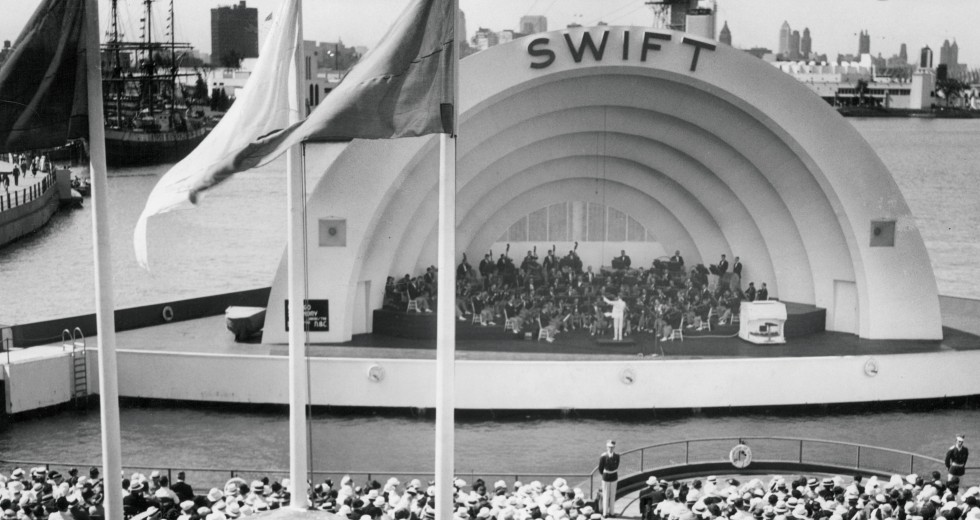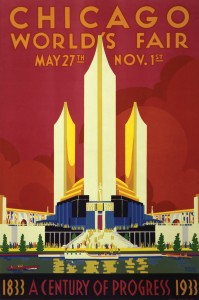
A Century of Progress International Exposition—the World’s Fair celebrating the centennial of the city of Chicago—opened on May 27, 1933, and due to its immense popularity, was extended through October 31, 1934, attracting nearly fifty million visitors.
Beginning on July 1, 1934, the Chicago Symphony Orchestra presented 125 concerts at the Swift Bridge of Service, which linked the mainland with Northerly Island at 23rd Street. For ten weeks, the Orchestra regularly presented as many as fourteen concerts each week—a matinee at 3:30 p.m. and an evening concert at 8:00 p.m. every day of the week—only occasionally canceling due to extreme heat or rain and rarely repeating repertoire.
Associate conductor Eric DeLamarter, who conducted more than two-thirds of those concerts, led the first program on Sunday afternoon, July 1. He conducted the Orchestra in Wagner’s Huldigungsmarsch, Schubert’s Unfinished Symphony, Parlow’s arrangement of two of Brahms’s Hungarian Dances, Thomas’s Overture to Mignon, Tchaikovsky’s Capriccio italien, Glazunov’s Ruses d’amour, and dances from Borodin’s Prince Igor.
Guest conductors included Jerzy Bojanowski, Carl Bricken, Henry Hadley, Sir Hamilton Harty, Victor Kolar, Karl Krueger, Anthony A. Olis, Frank St. Leger, Willem van Hoogstraten, and Henry Weber. Several Orchestra members were featured as soloists, including concertmaster John Weicher, viola Clarence Evans, principal cello Daniel Saidenberg, cello Richard Wagner, principal bass Vaclav Jiskra, and principal harp Joseph Vito.
Frederick Stock led the final concert on Saturday evening, September 8, conducting his transcription of Bach’s Passacaglia and Fugue in C minor, Tchaikovsky’s Fifth Symphony, Ravel’s La valse, his arrangement of the love scene from act 2 of Wagner’s Tristan and Isolde, and Respighi’s Pines of Rome.
Image above: Eric DeLamarter and the Orchestra onstage at the Swift Bridge of Service bandshell, July 1, 1934 (Chicago Tribune archive photo)
This article also appears here.
